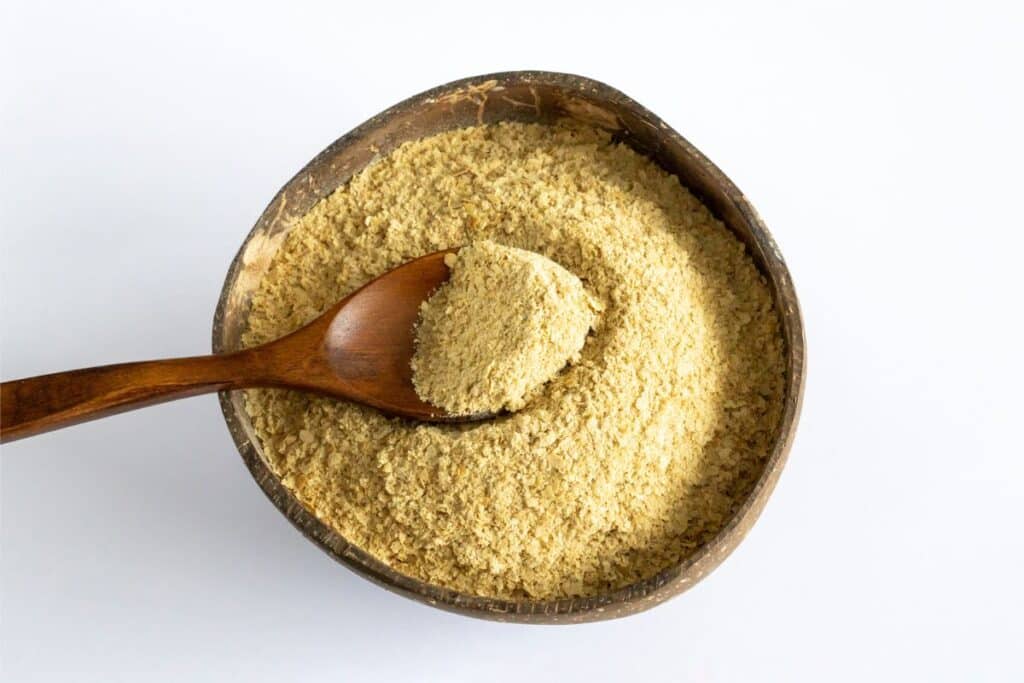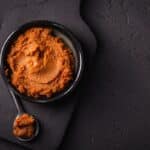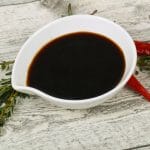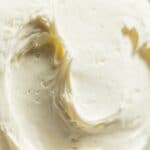Quick summary: Brewer’s yeast is a natural substitute for nutritional yeast, but some other replacements can help you also, like Parmesan cheese, soy sauce, white miso paste, and many more.
Nutritional yeast has a great deal of benefits and culinary uses. If you are vegan, you’re probably familiar with nutritional yeast (or nooch) as the ingredient that lends a non-dairy cheesy flavor to your meals.
However, in a range of meaty and vegetarian dishes, nutritional yeast is also used as a superb flavoring that brings depth and umami notes.
If you can’t find nutritional yeast at your local grocery store or have run out last minute when it’s time to season your favorite snack, we’re here to help. Additionally, if you’re cooking for someone with a yeast intolerance or allergy, you will also require a suitable substitute.
In this guide, we’ll help you choose the best nutritional yeast substitute for your recipe.
Note: Follow the guidelines for replacement quantities since some options are pretty potent and can easily overpower the other flavors in your dish.
Types of Yeast
Brewers yeast, bakers yeast, and nutritional yeast all come from the same yeast species, namely Saccharomyces cerevisiae. Nutritional yeast, however, has been inactivated so it does not work well to bake bread or brew beer.
The cells are killed through heating during the manufacturing process. The yeast is then harvested, washed, dried, and crumbled for packaging.
Nooch can be unfortified or fortified with added vitamins and minerals to enhance the nutrient content. The fortified type is the most common, offering a range of health benefits. It is high in antioxidants and vitamin B12.
It is available as pale-yellow powder, flakes, or granules and comes packaged in a shaker, bag, or plastic container. You can generally find it in the health food section of stores.
Nutritional Yeast Taste and Uses
Nutritional yeast is a seasoning you want to stock, just like salt and pepper in your everyday pantry. Since it is naturally free of fat, sugar, gluten and low in sodium, it is a much healthier alternative to most processed seasonings.
It has a remarkable umami flavor that enhances savoriness. Some people describe it as having a nutty taste and cheesy flavor, reminiscent of a parmesan sprinkle.
As with any other versatile seasoning, it can be sprinkled on bagels, toast, popcorn, salad, pasta, and potato dishes. It can also be used to add creaminess to vegan sauces, mac and cheese, stews, and casseroles, and used as a thickener for soups and sauces.
Best Nutritional Yeast Substitutes
# 1. Brewer’s Yeast
Since it is also derived from Saccharomyces cerevisiae, Brewer’s yeast is a good natural substitute with a similar texture. It is a byproduct created during beer brewing.
It is important to note that the flavor is more bitter and, unsurprisingly, has a beer-centric aftertaste. For this reason, you’ll need to use less than your recipe calls for and be picky about which dishes you use it in, as it can overpower delicate flavors.
It can also be used effectively as a thickener in rich sauces.
Substitute Quantity: Use only 2 teaspoons of Brewer’s yeast for every tablespoon of nooch called for in your recipe.
# 2. Parmesan Cheese
If you don’t need a dairy-free replacement, parmesan cheese is an ideal alternative. It is generally easy to find and has similar flavor notes.
Parmesan is a granular, hard Italian cheese made from cow milk. It is aged for at least 12 months and has an unmistakable cheesy taste. It can be sprinkled on any savory dishes, from pasta and salad to popcorn, soup, pizza, vegetable bakes, and toast.
Parmesan cheese is high in sodium and cholesterol, with low nutritional benefits. If you’re trying to reduce your salt intake, this won’t be the best choice.
Substitute Quantity: Swap parmesan cheese in equal quantities.
Read more on Parmesan cheese shelf life and whether it can go bad as regular cheeses do.
# 3. Soy Sauce
Soy sauce may not be a good choice for sprinkling on popcorn, but it is ideal for giving liquid-based recipes a great depth of flavor in small amounts.
Regular soy sauce has a very high sodium content and generally contains small amounts of gluten. You do, however, get low sodium and gluten-free versions, so look out for these if you want a healthier option.
Made from fermented soybeans, the sauce has a dark color and just a small amount can add umami savoriness to stews, soups, sauces, stir fry, rice, meat, or vegetable dishes.
It is not an ideal choice for pasta or Italian-style dishes. In that case, you are much better off with parmesan.
Substitute Quantity: Use only half the amount called for in your recipe to avoid overpowering your dish with a salty punch. If your recipe calls for 2 teaspoons of nutritional yeast, use only 1 teaspoon of soy sauce.
Learn how long you can keep soy sauce after opening and how to tell if it’s spoiled.
# 4. White Miso Paste
This is another super salty Asian ingredient that is known for its umami depth. Miso paste is, however, not a powder that can be sprinkled over your popcorn!
The thick, sticky paste is ideal for use in liquid-based recipes such as sauces, soups, and stews. It is popularly used to make miso soup and is only needed in very small quantities.
White miso paste is the best type to use as a replacement, although you can use another type if it’s all you have in the pantry.
It is made from fermented soybeans, so won’t be suitable for anyone with soy allergies. You also want to be mindful of the high sodium content if this is a concern.
As with soy, it is not a suitable alternative for Italian-style pasta
Substitute Quantity: Miso is very salty, so you’ll need to reduce the amount you use by two-thirds. If your recipe requires one tablespoon, use one teaspoon of miso paste as a replacement.
# 5. Coconut Aminos
Coconut aminos is known as the health-friendly cousin of soy sauce. It has a similar, but milder, taste and the same dark color. It is, however, much lower in sodium and free of yeast, gluten, and soy.
If you love soy sauce but have allergies or high blood pressure, this is a good option for you. As with soy sauce, it is suitable only for use in liquid-based recipes and will add a remarkable savoriness and depth of flavor.
Substitute Quantity: Coconut aminos have a slightly saltier taste and a hint of sweetness. Start by only adding half the amount required in your recipe to avoid changing the flavor profile.
# 6. Dried Mushrooms
Dried mushrooms are another very healthy alternative, and although they don’t have the same saltiness or cheesy flavor, they do add wonderful earthy depth and umami notes. If you specifically need the cheesy flavor notes in your dish, this won’t be a good choice.
The type of mushrooms you choose will affect the flavor richness. Dried porcini mushrooms are one of the best options as they have a more pronounced flavor than many other types.
Dried mushrooms can either be chopped and soaked in broth, stews, soups, and sauces or ground into a powder and sprinkled into dishes during cooking.
Dried mushrooms are generally free of artificial ingredients, gluten, soy, yeast, and salt, which make them a healthy vegan choice, rich in nutrients. It is, however best to check the packaging as some producers may add preservatives that contain allergens.
Substitute Quantity: Replace dried mushroom powder in equal quantities.
# 7. Marmite or Vegemite
Marmite and Vegemite are both yeast extracts that are highly popular in Australia and the United Kingdom.
These thick sticky spreads are dark in color, and extremely salty, and besides being spread on toast, they can add a great depth of flavor to sauces, soups, baked goods, stir fry, and stews.
Since it is made from yeast, it has a similar undertone. You also get cheese-flavored Marmite which can add the extra cheesy notes that regular Marmite lacks.
Substitute Quantity: Err on the side of caution when using these as a replacement since they have a very concentrated, salty taste. For every tablespoon, your recipe requires, use only one teaspoon of the yeast extract and slowly add to taste if necessary.
# 8. Vegetable Bouillon
Vegetable bouillon powder (or stock powder) often contains yeast as an ingredient. Although it lacks the cheesy notes of nutritional yeast, it will add richness and savoriness.
Mix the powder with a small amount of water to dissolve it before adding it to stews, sauces, soups, or stir fry. This will allow you to mix it into the liquid base evenly for flavor distribution.
The powder is not suitable for sprinkling on items, so use it mainly to enrich liquid-based dishes.
Substitute Quantity: You can substitute vegetable Bouillon in equal quantities as a nutritional yeast replacement.
# 9. Onion Flakes
Whereas dried onion flakes are best added to a liquid or cooked base, crispy fried onion flakes can be added as a textural element sprinkled over salads, vegetables, rice, and pasta. Either way, onion flakes will add a punchy savoriness and a bit of tang to your dish.
If your dish already contains fresh onions, reduce the quantity significantly when using the flakes as a substitute.
Substitute Quantity: When using onion flakes in a sauce, soup, or stew, start with half the amount recommended. If you are sprinkling crispy fried onions over a dish, season to taste.
# 10. Ground Cashew and Spice Mix
Raw cashews are used in multiple ways in vegan cooking. They are often used to make creamy sauces and soups, vegan cheese sauce, smoothies, cookies, crusts, stuffings, smoothies, and crumbles.
Although they don’t have the same flavor as nooch on their own, you can combine ground cashews with spices to add deep savoriness.
If you select your spices carefully, you can easily make a gluten and yeast-free substitute to sprinkle over vegan recipes such as pasta, roast vegetables, and stir fry.
Garlic powder, onion powder, salt, and red pepper flakes, are all great additions, but you can customize it according to the cuisine type you are cooking.
For something like yogurt or smoothie toppings, you can leave out the savory spices and enjoy a neutral flavor or add cinnamon for a sweet twist.
When blending the cashews, blend only until they form a granular to a powder consistency. Over blending them will cause a paste to form with an entirely different texture.
Substitute Quantity: Replace the cashew spice mix in equal quantities as a nutritional yeast alternative.
# 11. Chickpea Flour and Spices
Many of our substitute options above are best when smaller quantities of nooch are required. But what do you do when your recipe calls for a ¼ cup? You can’t possibly add that amount of soy sauce or miso paste to your dish and still have an edible outcome.
This is where spiced chickpea flour can be a good option.
Chickpea flour has a similar texture and consistency, but remember that it is a raw flour and is thus best toasted before using. We recommend this mainly to thicken sauces or make a crumble topping for dishes.
Toast the chickpea flour and your selection of spices together briefly to release a nutty flavor. You can even mix in a bit of brewers yeast when using it as a topping.
If you are not familiar with the taste or texture of chickpea flour, make sure you taste it before adding it to your dish, so you know what to expect.
Substitute Quantity: You only want to use 2/3 of what your recipe calls for. If your recipe requires 1 cup of nooch, use 2/3 cup of your chickpea flour and spice mixture.
# 12. Vegan Parmesan Cheese
Whether you make your own vegan cheese recipes or have a well-stocked health store nearby, vegan cheese can make an excellent substitute. It is especially great as a topper in sauces, pasta dishes, soups, baked potatoes, casseroles, and with salads, and bagels.
Vegan parmesan cheese is the best type to use as a replacement since it has a slightly bitter flavor and extra savoriness compared to other milder cheese types.
Substitute Quantity: Replace vegan parmesan in equal quantities.
FAQ
Whether in powder, flakes, or granule form, store it in an airtight container in a cool, dark, and dry place. You can also keep it in the refrigerator or freezer to extend its shelf life. It is very important to ensure there is no exposure to moisture, regardless of where you store it.
When stored in an air-tight environment, it can last up to 2 years.
Although the two yeast types are derived from the same species, they cannot be used interchangeably. Brewer’s yeast is too bitter to consume in the same quantities, and nutritional yeast is deactivated and will therefore have little effect on the beer brewing process.
Conclusion
Just because you’re having trouble finding nutritional yeast at a grocery store or your local health food stores, doesn’t mean you have to forego the delicious savory flavor of your recipe.
You can still add a great cheesy and nutty flavor to vegan dishes, pasta recipes, and your favorite snacks by using a substitute for nutritional yeast instead.
For cheesy sauces with a creamy texture, opt for parmesan cheese, vegan cheese, or cashew powder. If a salty punch and umami depth is what you’re after, soy sauce, miso paste, coconut aminos, onion flakes, or vegetable bouillon are all good options.
Happy Cooking!
*image by AnastasiiaZab/depositphotos









